On Bank Holiday Monday 7 May 2018 we drove south to Astley Book Farm, just outside Nuneaton. It was Julie-friendly, and had a good café – website.
Then we stopped at St Mary the Virgin, Astley, and went for an explore – SP 311894. There is a good description and lots of photos at the Nuneaton and North Warwickshire Family History Society site. I have found the church’s facebook page – but not a website for them.
When we parked I saw a sign to the castle and wandered there before visiting the church. I found Landmark Trust holiday cottage (“cottage” is not the best word) and it looked fascinating. Searching the web later – here is the site for the cottage itself, and here is a discussion on the BBC about the rebuilding. The castle dates back to Saxon times, and was owned by the Grey family from 1420 to 1600. Elizabeth Woodville owned the castle with her husband Sir John Grey. He died fighting for the Lancastrians in the War of the Roses. She married Edward IV. Their daughter, Elizabeth of York, became Astley’s second queen through her marriage to Henry VII. Their great-granddaughter, Lady Jane Grey, was the third queen – for just nine days. The castle burned down in 1978, and, a couple of decades later, the Landmark Trust built a new house in the ruins. It look rather wonderful!
Having not disturbed the people on holiday, I walked across to the church – with a gorgeous cherry tree in full bloom. Before Domesday a great noble, whose name was Alsi, held the hamlet of Easteua and the forest around it. The church was certainly here by 1285, because a priest was appointed in that year. In 1343 Sir Thomas Astley built the church we see. He called it “my fair and beautiful Collegiate church”. The central tower had a lead covered spire, and a light was maintained here – ‘The Lantern of Arden’ to guide travellers through the thick forest (if the forest was that thick, would the light have been seen?). The spire fell in 1600, the nave was shortened, monumental chapels went – but Sir Richard Chamberlayne, owner of the castle at the time, started the process of rebuilding. I wandered round the outside, said Hello to Joseph Bond of this parish, admired the carving, and entered under a lamp that would not be out of place on a British Rail station of the 1970s.
There was a nice welcome inside. One chap was cleaning the brass and welcoming visitors. I found a Norman octagonal font, and alabaster figures of Sir Edward Grey, Lord Ferres of Groby, died 1457; his daughter-in-law, Elizabeth Talbot, wife of Sir Edward Grey who became Lord Lisle, died 1483; and Cecily Bonville, daughter of Lord Bonneville Harrington, 2nd wife of Thomas Grey, the first Marquess of Dorset, died 1529. They were originally in the Nave, but placed in their present position at the end of the C19. We should also mention that also in the C19, Robert Evans married his second wife Christiana. Their third child, Mary Ann, is the author George Eliot – her Scenes from Clerical Life has Astley as the fictional village of Knebley.
Looking west, you can see the height of the tower. Walking along the Nave you can enjoy nine early C17, post-Reformation, wall paintings. We’ve sometimes found pre-Reformation wall paintings which have survived under whitewash for several centuries, but we rarely see post-Reformation ones – seven biblical passages, plus the Creed and the Lord’s Prayer.
Also fascinating are the choir stalls – 18 of the original 24 which used to be at the west end of the Collegiate Quire (chancel). They may well date to the second half of the C14. The lower section with wonderful misericords are probably a little earlier than the canopy with its carving. The painted figures represent the Apostles on the north side, and the Prophets on the south. The scrolls were painted in 1624.








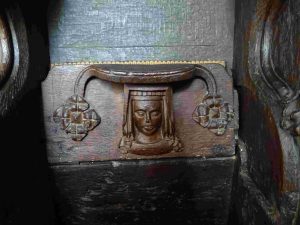


 Moving into the Chancel, the Chancel arch is worth looking up at, as are the ceilings – while the black and white floor tiles were mentioned by George Eliot. The woodwork is rather nice, the altar table was probably adapted from the C17 draw leaf table, and the Triptych is C17 Flemish, the artist is unknown. You can see Mary Magdalene with her box of ointment, and Joseph of Arimathea holding the crown of thorns. Golgotha, and the garden tomb. It was presented to the church by Sir Francis Newdegate in 1905. I was a little confused, as sometimes the guidebook calls him Newdigate, sometimes Newdegate – both are right. Have a read of http://adb.anu.edu.au/biography/newdegate-sir-francis-alexander-newdigate-7824 – he sounds fascinating! He also presented the Venetia lamps, yes, they are State Gondola Lanterns, engraved with the lion of St Mark. (I am imagining the conversation on the DAC – “Petition: to install two Venetian gondola lamps”).
Moving into the Chancel, the Chancel arch is worth looking up at, as are the ceilings – while the black and white floor tiles were mentioned by George Eliot. The woodwork is rather nice, the altar table was probably adapted from the C17 draw leaf table, and the Triptych is C17 Flemish, the artist is unknown. You can see Mary Magdalene with her box of ointment, and Joseph of Arimathea holding the crown of thorns. Golgotha, and the garden tomb. It was presented to the church by Sir Francis Newdegate in 1905. I was a little confused, as sometimes the guidebook calls him Newdigate, sometimes Newdegate – both are right. Have a read of http://adb.anu.edu.au/biography/newdegate-sir-francis-alexander-newdigate-7824 – he sounds fascinating! He also presented the Venetia lamps, yes, they are State Gondola Lanterns, engraved with the lion of St Mark. (I am imagining the conversation on the DAC – “Petition: to install two Venetian gondola lamps”).
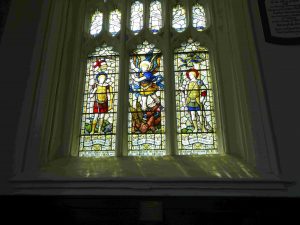 This is a fascinating church – and one I found by chance. Thanks so much for polishing the brass and being open. Let’s end with some of the memorials, and the huge tower.
This is a fascinating church – and one I found by chance. Thanks so much for polishing the brass and being open. Let’s end with some of the memorials, and the huge tower.





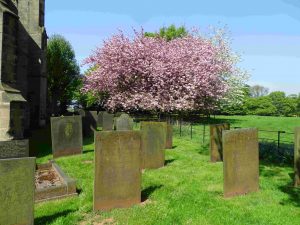
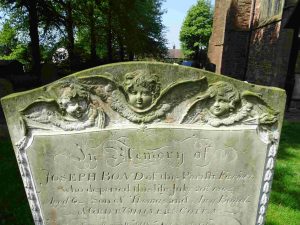
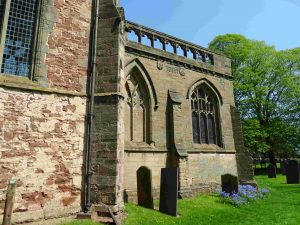

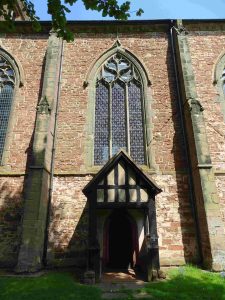






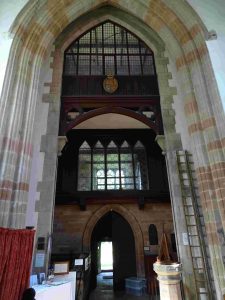

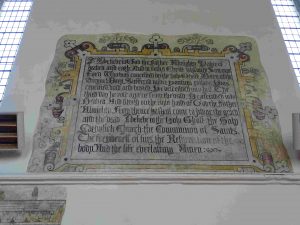




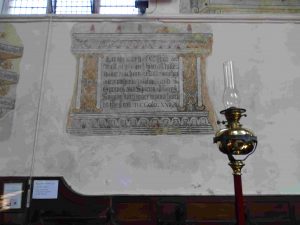







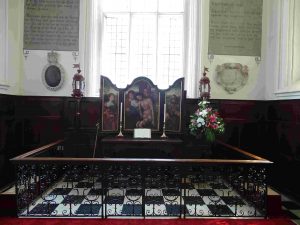


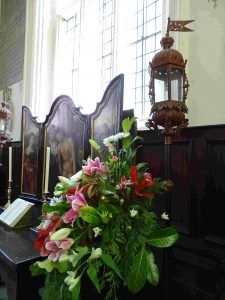


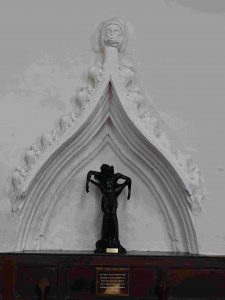


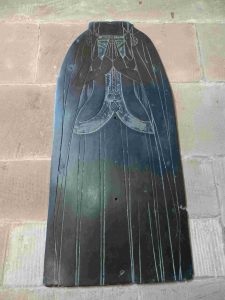

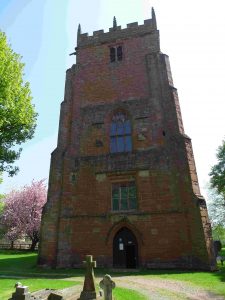
Oh what a blessing that you explored St Mary the Virgin. Thomas Grey, 1st Marquess of Dorset is my 15th GGrandfather. You can imagine what a treasure it was to see photos of the tombs, relics, and ambiance of your visit to Astley. The Grey’s and Bonville’s, etc. are my heritage, but I’d never seen Astley. Words cannot express in this space the profound excitement your gift has brought us. I’d like to ask your permission to use your photos to show my grandchildren and place with my personal tree, with such great thanks. One clarification, if I may, you mention, if I read correctly, that the effigies are of Edward Grey, Cecily Bonville, and Elizabeth Talbot. We’ve been told since forever that Thomas Grey was buried with his wife Cecily Bonville. Is it a surety that the figure is Edward Grey and not Thomas?
By all means use my photos on your family tree. I’m not sure about the effigies – you’ll need to ask the church themselves and hope someone there can tell you more. Best wishes, Peter